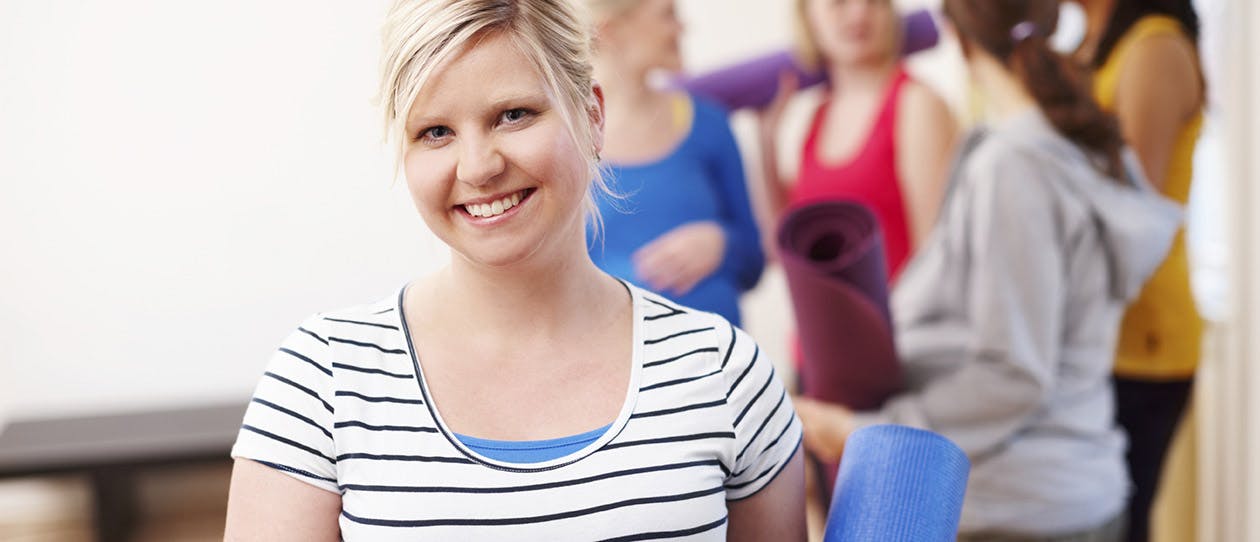
- Health hub/
- Resources for Pregnancy and Preconception/
- Keeping fit during pregnancy


Exercising during pregnancy can be safe and has many potential benefits for you and your baby. Before you engage in an exercise program, it is essential that you discuss your health with your healthcare professional. If you have no serious medical conditions and you have an uncomplicated pregnancy, then it’s usually safe for you to exercise.
Contra-indications to exercise in pregnancy
- Pregnancy-induced hypertension
- Pre-term rupture of membranes
- Pre-term labour during prior or current pregnancy
- Incompetent cervix
- Persistent second or third trimester bleeding
- Placenta praevia
- Intrauterine growth retardation
- Pre-existing heart or lung disease
Why exercise in pregnancy?
Women who exercise before conception and maintain an exercise program throughout pregnancy have been shown to have fewer interventions during labour, have a shorter active birth and have less foetal distress. Women also report that they recover from labour easier if they had exercised throughout pregnancy.
Other benefits include fewer physical symptoms of pregnancy (for example nausea, heartburn, leg cramps, constipation, haemorrhoids, and insomnia); an increased self-esteem; improved blood glucose levels; improved circulation; and healthy weight control.
10 tips to safe exercise in pregnancy
1. Start slow
Start exercising at a level that does not cause pain, shortness of breath or excessive tiredness. Slowly, over time, increase your level of activity according to your improved level of fitness whilst always being aware of your limitations.
2. Keep it comfortable
Swimming and stationary cycling are the most comfortable types of exercise during pregnancy, as they don’t require your body to carry any extra weight. Walking and low-impact aerobics are usually well tolerated.
3. For the runners
If you have enjoyed running prior to your pregnancy then it is safe to continue. However, many women become uncomfortable and usually have to decrease or stop their running in the later stages of pregnancy.
4. Pregnancy yoga
Yoga is a great form of exercise to do throughout pregnancy as it helps to strengthen and lengthen muscles. Stretching will improve your flexibility, will reduce the chances of injury while you are exercising and will assist you during labour. Ensure you have a teacher who is aware of poses that shouldn’t be performed in pregnancy.
5. No extreme sports
Avoid exercise that involves sudden changes in body position, requires exceptional balance, or involves a high risk of falls or trauma. Contact sports such as hockey, boxing, football and soccer should be avoided.
6. Stay cool
During pregnancy, your internal temperature rises and this coupled with the increase in heat production caused by exercise can be dangerous if you don’t keep cool.Don’t exercise in the heat of the sun, make sure there is enough ventilation if indoors, and stop if you are feeling hot.
7. Keep hydrated
Drink plenty of fluids whilst you exercise, even if you don’t feel thirsty.
8. Contractions during exercise
If you feel any discomfort, pain or experience contractions during exercise, stop and inform your doctor.
9. Increased chance of injury
Due to circulating hormones that aid in the relaxation and mobilisation of the pelvis and surrounding joints, women in the later stages of pregnancy are more vulnerable to joint injury.
10. Increased energy requirements.
Women who exercise during pregnancy may require a higher energy intake than the extra 150-300 calories per day recommended for non-exercising pregnant women.
References available on request




